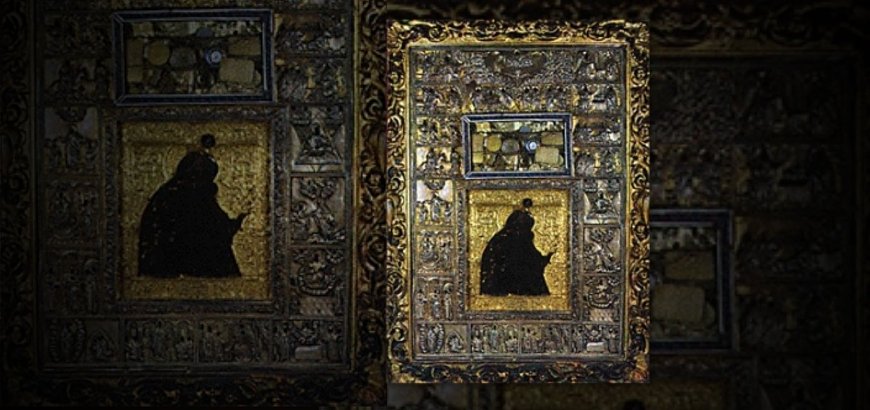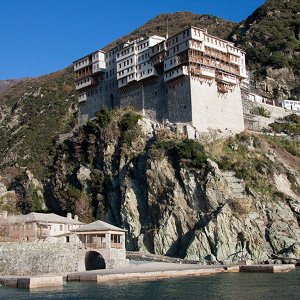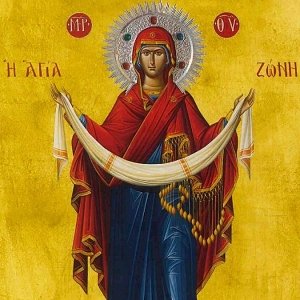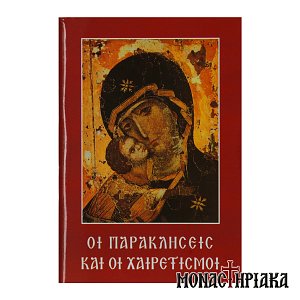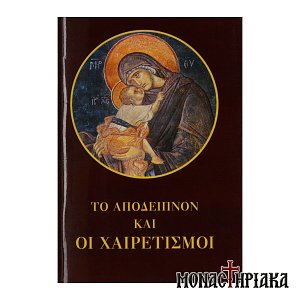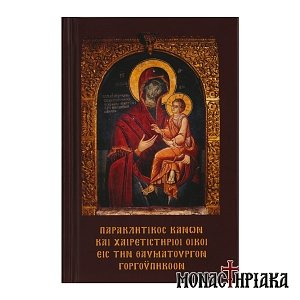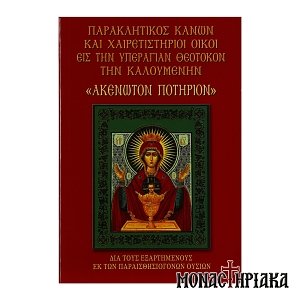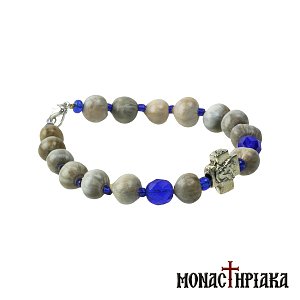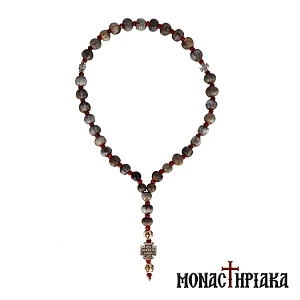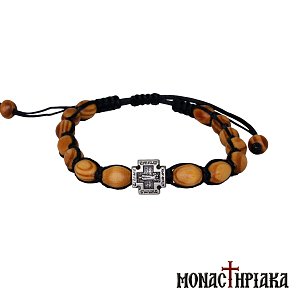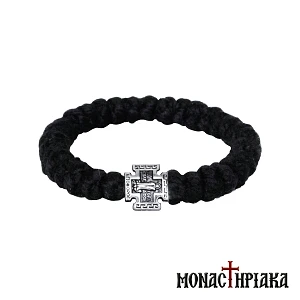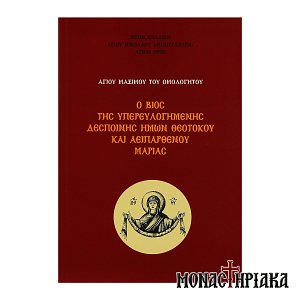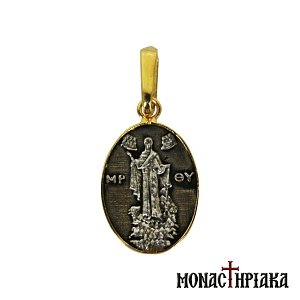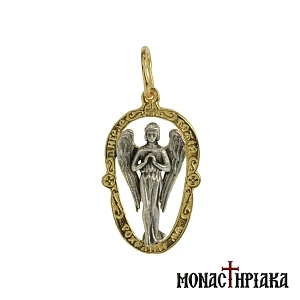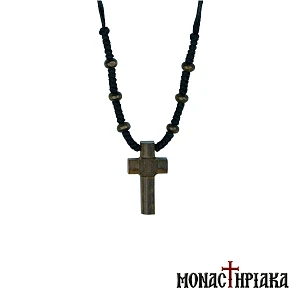Virgin Mary the Myrrh-scented or Theotokos of the Salutations or Theotokos of the Akathist Hymn
The miraculous icon of the Virgin Mary Myrrh-scented, also known as the Virgin Mary of the Salutations or of the Akathist Hymn, is among the oldest icons of Mount Athos. It is preserved in the Holy Monastery of Dionysiou and its presence there is closely tied to numerous miracles.
The venerable icon of the Theotokos of the Salutations is small in size, made from wax and mastic while Its features have nearly disappeared due to the holy myrrh that exudes from it.
The two sides of the icon
On the front of the icon, the Most Holy Theotokos is depicted, while on the reverse side, there is a silver plaque showing the Emperor Alexios III Komnenos and St. Dionysios, the founder of the Holy Monastery of Dionysios.
This depicts the tradition of the icon being a gift from Emperor Alexios to St. Dionysios during his visit to Trebizond. The following inscription is found on the icon:
«This is the miraculous icon which Patriarch Sergius bore as he walked around the walls of Constantinople, sending away the enemies, and which Emperor Alexios personally gifted to St. Dionysios».
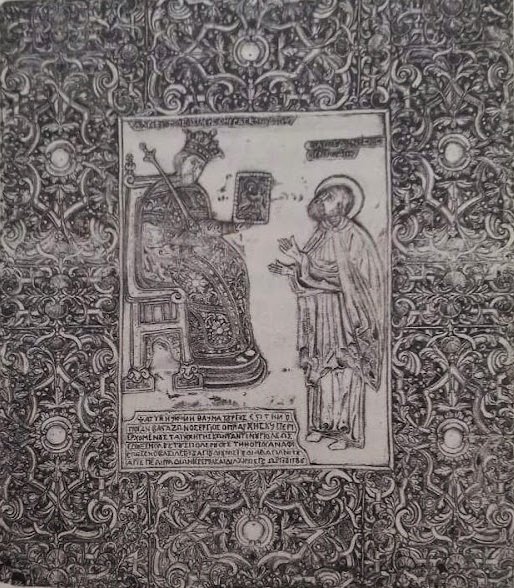
Find here the article: Holy Monastery of Dionysios: the imposing Monastery of Saint John the Forerunner and Virgin Mary of Akathist
The miraculous victory during the siege of Constantinople
During the siege of Constantinople, Patriarch Sergius was the leader of the defense against the Persian and Avar attacks. After enduring fierce attacks, to keep the morale high, the Patriarch carried the holy icon of the Theotokos, and together with the clergy and the people, they walked along the city walls, encouraging the few remaining defenders to hold their ground.
The army was numbered, as Emperor Heraclius was away on campaign in Persia. However, the defenders managed to resist the invaders, despite the enemy's numerical superiority.
On the historical night of the enemy’s determined assault on the city, a miraculous event occurred. A powerful whirlwind caused a great sea storm, decimating the enemy fleet near the Blachernae area. This event forced them to retreat and granted freedom to the Byzantines.
Why the icon of the Theotokos is called “of the Akathist” or “of the Salutations”
In a deeply emotional atmosphere, the faithful praised the Theotokos, attributing the salvation of Constantinople to the miraculous icon of the Virgin Mary Myrrh-Scented.
The clergy and the people gathered in the Church of the Theotokos, and for the first time, Patriarch Sergius chanted the magnificent spiritual hymn of the Salutations: «To thee, the Champion Leader, we thy flock dedicate a feast of victory and of thanksgiving, as ones rescued out of sufferings, O Theotokos».
This hymn later became known as the "Akathist Hymn", because the faithful sang it standing, with deep fervor and gratitude to the Virgin Defender General. From this event, the icon of the Virgin Mary came to be known as "of the Salutations" or "of the Akathist".
The miracles of the Virgin Mary
The miracle of the Algerian Pirate
In the 13th century A.D., the holy icon of Theotokos Myrrh-Streaming was kept in the Holy Monastery of Dionysiou. In 1592 A.D., the Algerian pirate named Artavan Alpha raided the Monastery, stealing the icon along with 50,000 gold coins, oil, and wine.
Despite the fierce objections of the Abbot and the monks concerning the theft of the holy icon, the pirates set off to return to Skyros island by sea.
During their voyage, the Algerian pirate had a dream in which the Theotokos appeared to him in a threatening manner, saying: «Why have you taken me, wicked man? Take me back to where I was calm and peaceful». Though shaken by the dream, he ignored her command.
Why the Icon of the Theotokos is called Myrrh-Streaming
After an unexpected and violent storm, the pirate, filled with fear, approached the holy icon. Astonished, he saw that the holy icon had broken the chest in which it was stored due to the myrrh flowing from it. For this reason, it was called "Myrrh-Streaming" (in Greek Myrovlitisa).
Then, he took the icon in his hands, and immediately, the storm calmed. Realizing that the storm had been caused by the icon of the Virgin Mary, he hastily ordered its return to the Monastery. According to tradition, Artavan presented the icon, showing the shattered chest and the cloth soaked in myrrh, in which it had been wrapped.
Deeply moved, the monks received the icon, astonished by the miracle that had occurred. Some of the pirates, influenced by this divine event, were baptized as Christians and became monks.
The transfer of the icon to Skopelos Island
Later, around 1767 A.D., some thieves from Dalmatia stole the icon of the Virgin Mary Myrrh-Streaming. Upon their return, they were spotted by some Greek shepherds, who took the icon and brought it to Skopelos.
The miracle of Theotokos on Skopelos
The monks from the Holy Monastery of Dionysiou requested the return of the icon, but the local authorities of Skopelos refused to hand it over. After three months, an outbreak of plague struck the island, which the people of Skopelos saw as divine punishment for not returning the holy icon.
Repented the people of Skopelos island, returned the holy icon to the Monastery and dedicated a “metochi” (a small dependent monastery) on their island in its honor. From that time on, the Salutations are chanted daily at the Holy Monastery of Dionysiou in honor of the icon of the Virgin Mary of Akathist.
